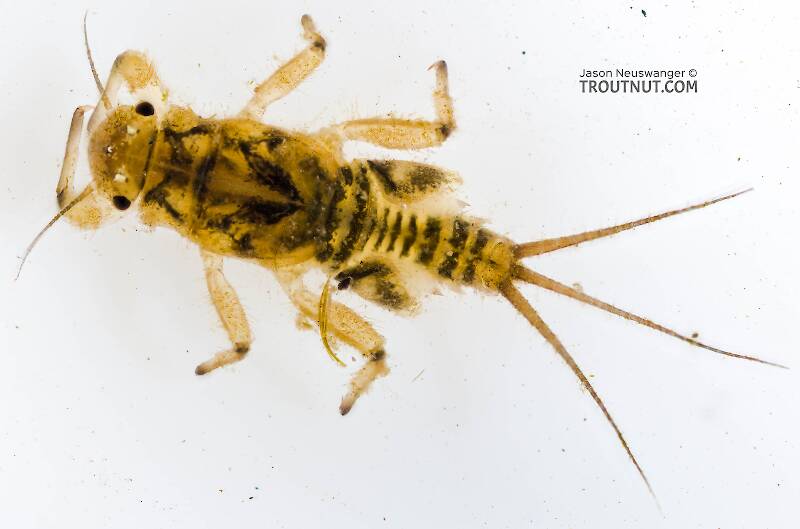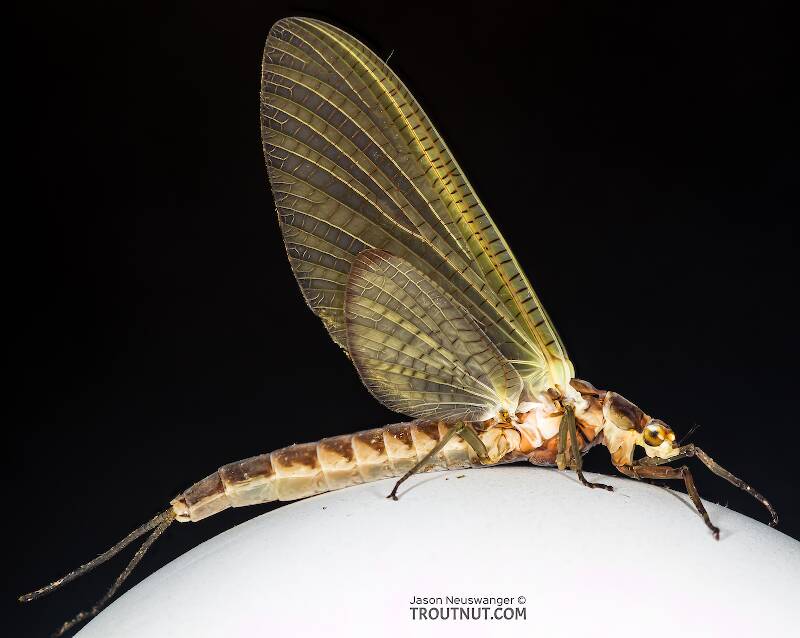
Hex Mayflies
Hexagenia limbata
The famous nocturnal Hex hatch of the Midwest (and a few other lucky locations) stirs to the surface mythically large brown trout that only touch streamers for the rest of the year.
Featured on the forum

Troutnut is a project started in 2003 by salmonid ecologist Jason "Troutnut" Neuswanger to help anglers and
fly tyers unabashedly embrace the entomological side of the sport. Learn more about Troutnut or
support the project for an enhanced experience here.
Male Ameletus suffusus (Brown Dun) Mayfly Nymph Pictures
A few of these nymphs turned up in my kick net sample, with this being the only one fully mature and ready to emerge. It keys pretty straightforwardly to Ameletus suffusus, particularly because of the triangular dark patch on the labrum. The abdominal markings are close but don't quite match other drawings, likely just individual variation.
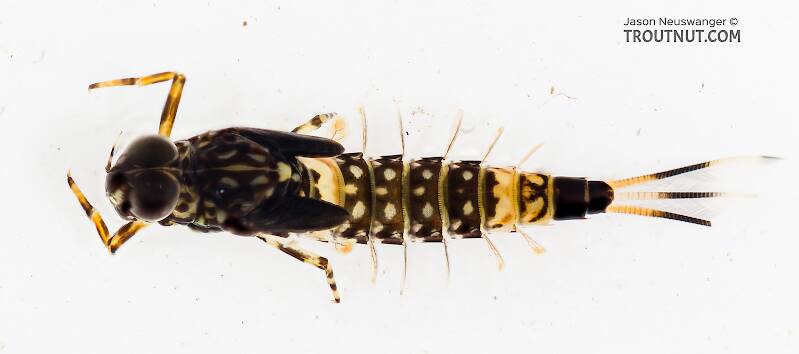
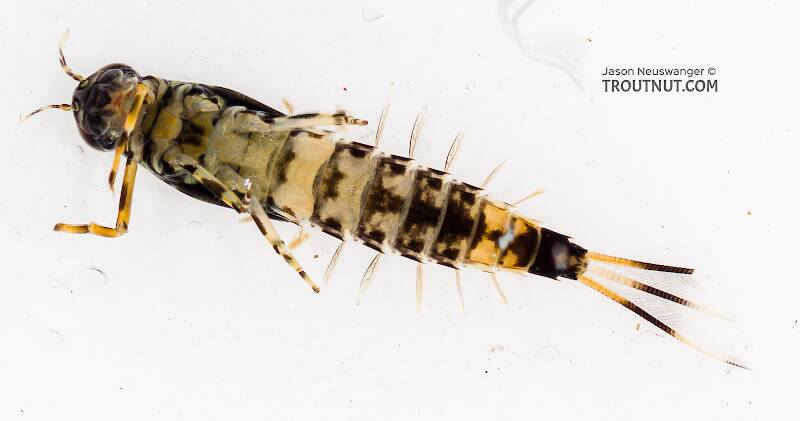
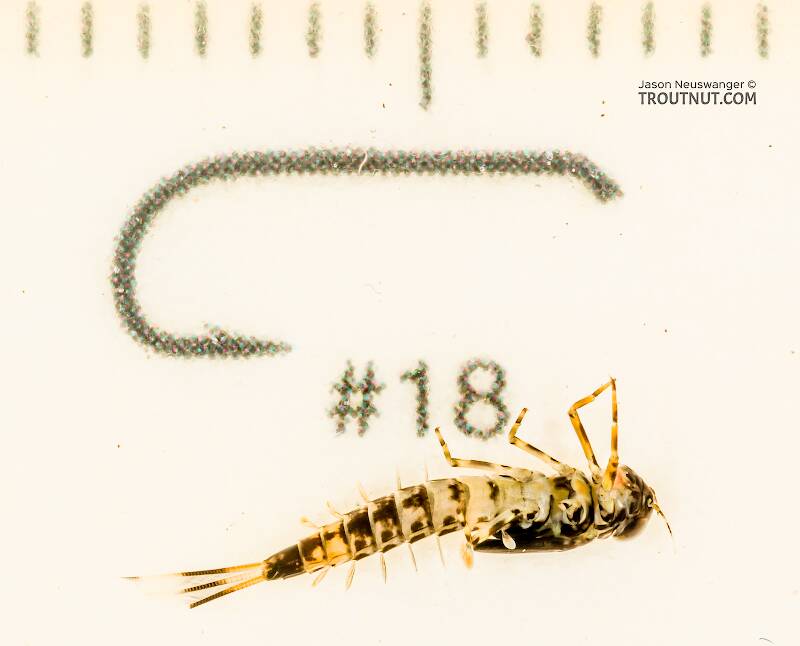
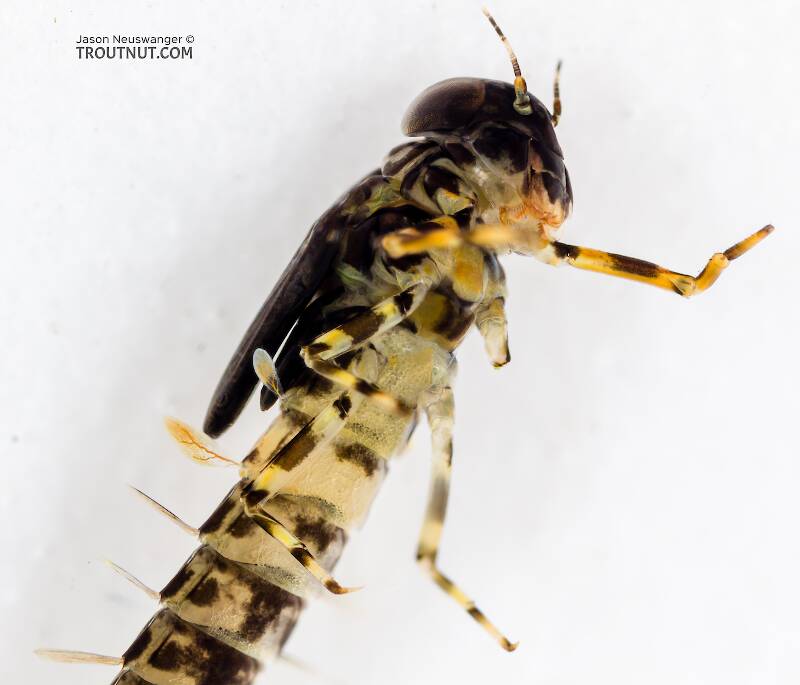
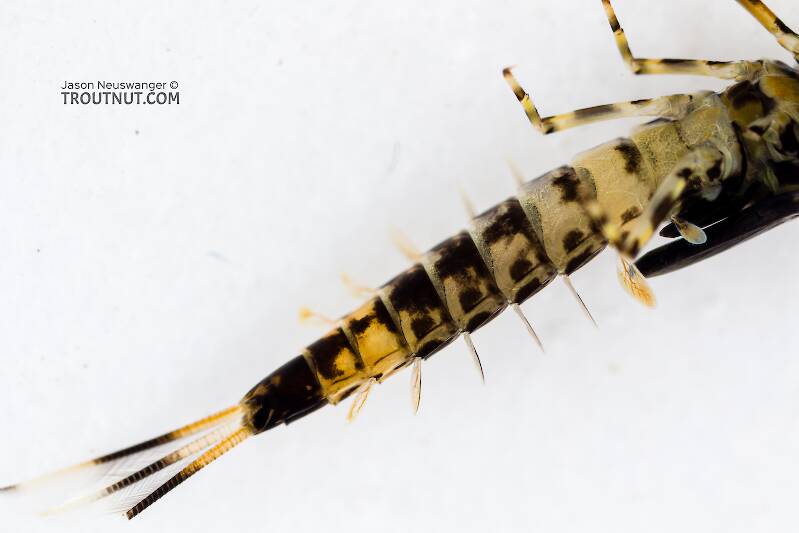
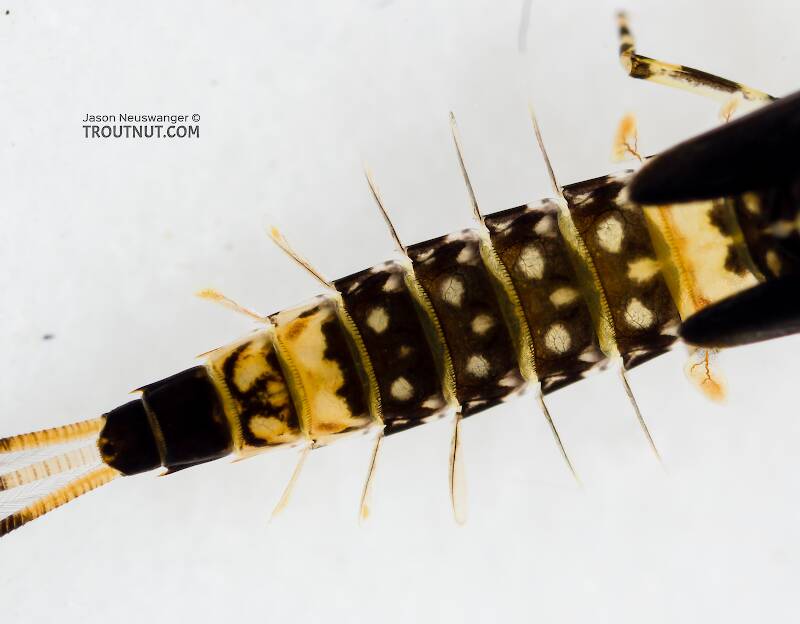

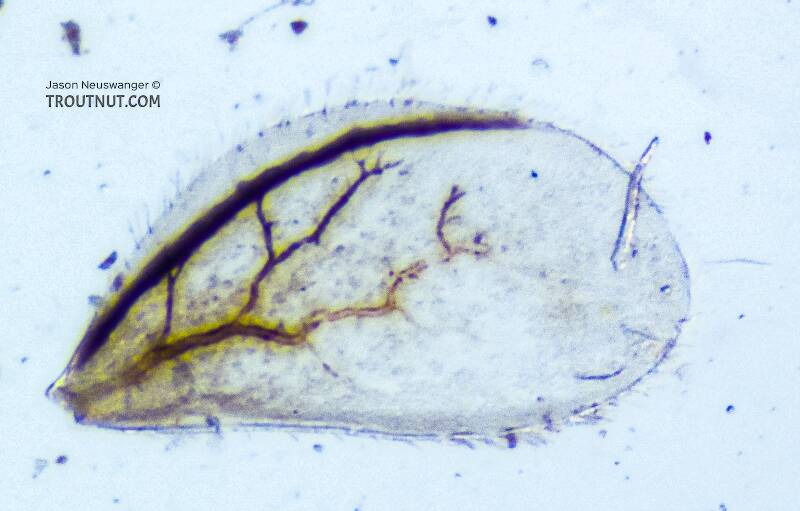
This mayfly was collected from the Cedar River in Washington on July 2nd, 2021 and added to Troutnut.com by Troutnut on July 4th, 2021.
Start a Discussion of Nymph
Male Ameletus suffusus (Brown Dun) Mayfly Nymph Pictures
Collection details
Location: Cedar River, Washington
Date: July 2nd, 2021
Added to site: July 4th, 2021
Author: Troutnut
Date: July 2nd, 2021
Added to site: July 4th, 2021
Author: Troutnut


